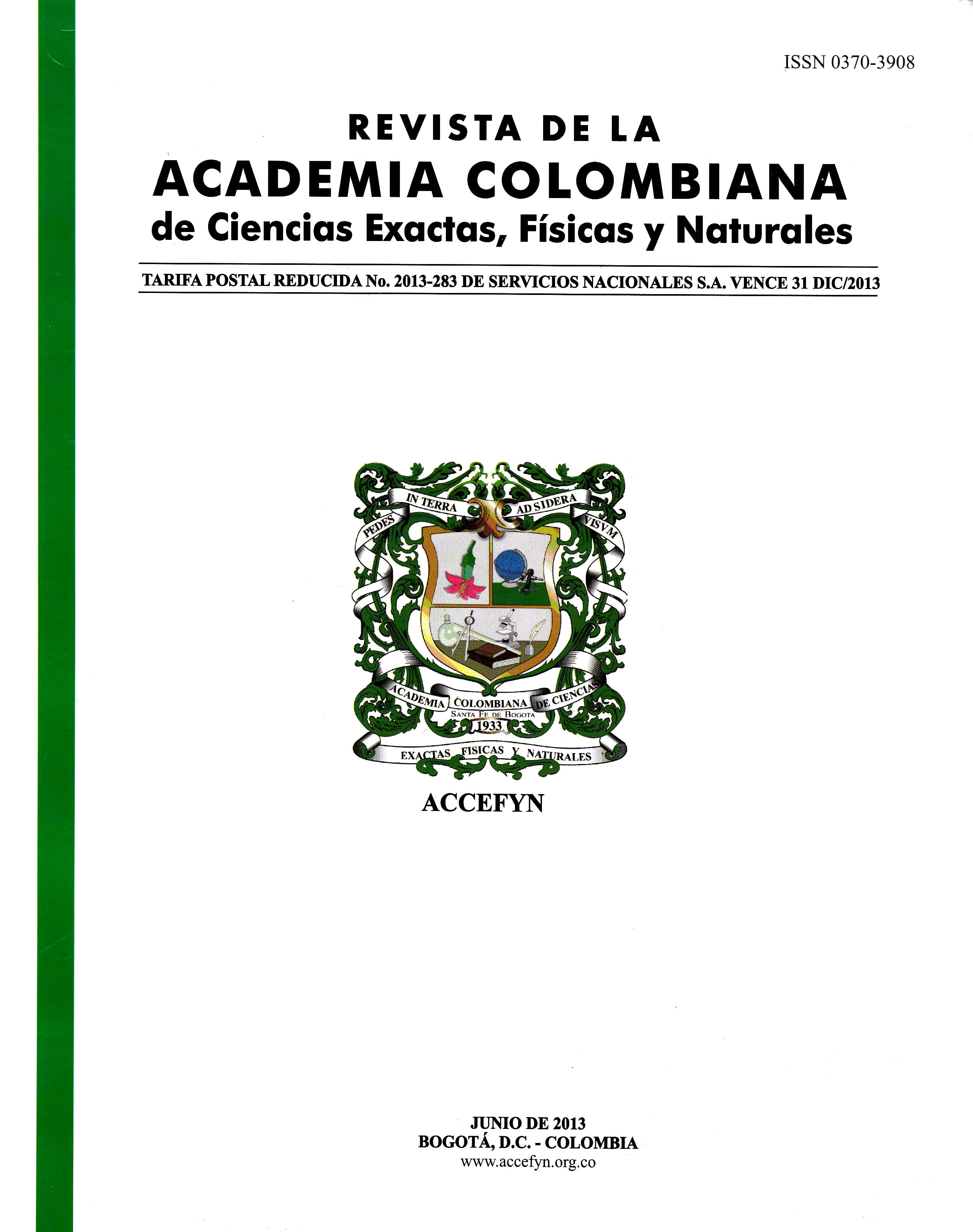Abstract
The study monitored the Black Phoebe along the Cali River to determine suitability as a bioindicator of water quality in urban areas. Recorded type of perch, forage substrates, and forage frequency, estimated size of territory defended by each mated pair, and characterized preferred habitat. Arthropod samples were collected to assess food availability. The results suggest that the Black Phoebe should not be used as an indicator of the biotic integrity of rivers in urban settings. Its activities are not restricted by the quality of its environment, as it has a flexible diet and responds well to a variety of offerings.
Keywords
References
Del Hoyo, J., A. Elliott & DA. Christie (eds.). 2004. Handbook of the birds of the World. Vol. 9. Cotingas to Pipits and Wagtails. Lynx Editions. Barcelona.
Davis, WJ. 1982. Territory size in Megaceryle alcyon along a stream habitat. Auk 99: 353-362.
Feck, J. & RO. Hall Jr. 2004. Response of American dippers (Cinclus mexicanus) to variation in stream water quality. FreshWater Biology 49: 1123-1137.
Hernández, A. 2008. Uso Potencial de Sayornis nigricans (Aves: Tyrannidae) como Indicador de Calidad Ambiental en una Zona Urbana de Santiago de Cali. Tesis de pregrado, Universidad del Valle, Facultad de Ciencias Naturales y Exactas. Cali- Colombia.
Hilty, S. L. & WL. Brown. 1986. A guide to the Birds of Colombia. Princeton University Press. Princeton, USA.
Hilty, J. & A. Merenlender. 2000. Faunal indicator taxa selection for monitoring ecosystem health. Biological Conservation 92: 185-197.
Holdridge, LR. 1967. Life Zone Ecology. 1st edition. Tropical Science Center. San José, Costa Rica.
Landres, PB., J. Verner & JW. Thomas. 1988. Ecological uses of vertebrate indicator species: a critique. Biological Conservation 2: 316-328.
Mattsson, BJ. & RJ. Cooper. 2006. Louisiana Waterthrushes (Seiurus motacilla) and habitat assessments as cost-effective indicators of instream biotic integrity. Freshwater Biology 51: 1941-1958.
Naranjo, LG. & VJ. Ávila. 2003. Distribución habitacional y dieta del Pato de Torrentes (Merganetta armata) en el Parque Regional Natural Ucumarí en la Cordillera Central de Colombia. Ornitología Colombiana 1: 22-28.
Ormerod, SJ., MA. Boilstone & SJ. Tyler. 1985 a. Factors influencing the abundance of breeding dippers Cinclus cinclus in the catchment of the river Wye, mid-Wales. Ibis 127: 332-340.
Ormerod, SJ., SJ. Tyler & JM. Lewis. 1985 b. Is the breeding distribution of dippers influenced by stream acidity? Bird Study 32: 32-39.
Ormerod, SJ., JO ́Halloran., SD. Gribbin & SJ. Tyler. 1991. The ecology of dippers Cinclus cinclus in relation to stream acidity in Upland Wales: breeding performance, calcium physiology and nestling growth. The Journal of Applied Ecology 28: 419-433.
Ormerod, SJ., JO ́Halloran & SJ. Tyler. 1993. Birds as indicators of changes in water quality. Págs. 179-216 en: R. W. Furness y J. J. D. Greenwood (eds.) Birds as monitors of environmental change. Chapman & Hall. London, England.
Rivera-Gutiérrez, HF. 2006. Composición y estructura de una comunidad de aves en un área suburbana en el suroccidente colombiano. Ornitología Colombiana 4: 28-38.
Shaw, G. 1978. The breeding biology of the dipper. Bird Study 25: 149-160.
Sorace, A., P. Formichetti., A. Boano., P. Andreani., C. Gramegna & L. Mancini. 2002. The presence of a river bird, the dipper, in relation to water quality and biotic indices in Central Italy. Environmental Pollution 118: 89-96.
Triplehorn, CA. & NF. Johnson. 2005. Borror and Delong ́s introduction to the study of insects. 7th edition. Thomson Brooks/Cole. Belmont, California.
Tyler, SJ. & SJ. Ormerod. 1985. Aspects of the breeding biology of the dippers Cinclus cinclus in the southtern catchment of the river Wye, Wales. Bird Study 33: 164-169.
Varela, A. 1994. Evaluación de la cuenca del rio Cali con énfasis en los conflictos por el uso del suelo en aspectos de carácter legal y agroforestal. Tesis de pregrado, Universidad Nacional del Colombia, Facultad de Ciencias Agropecuarias. Palmira-Valle.
Vickery, J. 1991. Breeding density of dippers (Cinclus cinclus), Grey wagtails (Motacilla cinera) and Common Sandpipers (Actitis hypoleucos) in relation to the acidity of streams in south-west Scotland. Ibis 133: 178-185.
Wayland, M., J. Kneteman & R. Crosley. 2006. The American dipper as a bioindicator of selenium contamination in a Coal Mine-affected stream in west-central Alberta, Canada. Environmental Monitoring and Assessment 123: 285-298.
Wolff, M. 2006. Insectos de Colombia, Guía Básica de Familias. Laboratorio de Colecciones Entomológicas-GIEM. Universidad de Antioquia. Medellín, Colombia.
Zar, JH. 1996. Biostatistical Analysis. 3rd Edition. Prentice-Hall Inc. New Jersey.
Zúñiga de Cardozo, MC. 1985. Estudio de la ecología del río Cali, con énfasis en su fauna bentónica como indicador biológico de calidad. Revista Asociación de Ingenieros Sanitarios de Antioquia -AINSA 8: 91-105.
Zúñiga de Cardozo, MC., AM. Rojas de Hernández & C. Serrato. 1994. Interrelación de indicadores ambientales de calidad en cuerpos de aguas superficiales del Valle del Cauca. Revista Colombiana de Entomología 20: 124-130.

This work is licensed under a Creative Commons Attribution-NonCommercial-NoDerivatives 4.0 International License.
Copyright (c) 2023 https://creativecommons.org/licenses/by-nc-nd/4.0





